Who's Afraid of Ofer Josef?
New Gothic artist exhibits for the first time in London - closing soon
If you like Gothic art – art which deals with dark themes like death, the supernatural, horror, and mysticism – it’s the right time for a day trip to London.
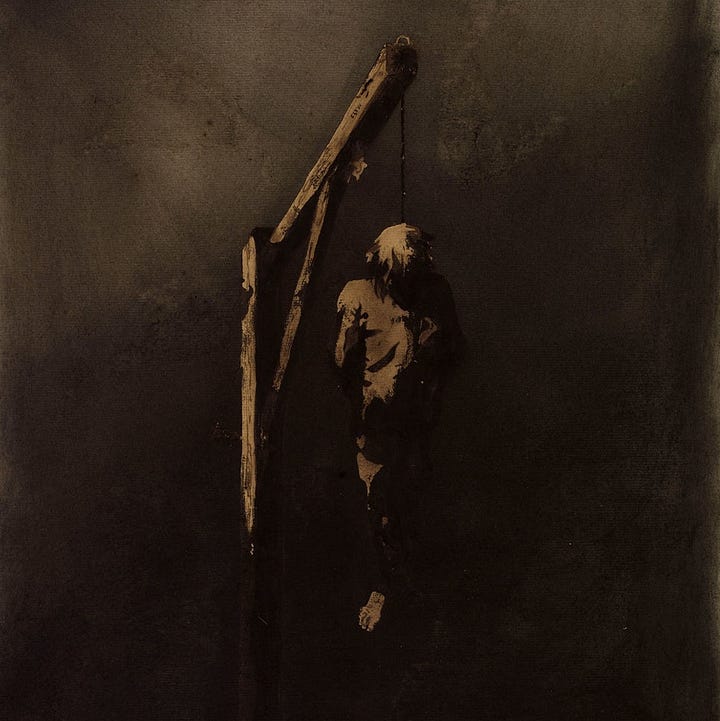
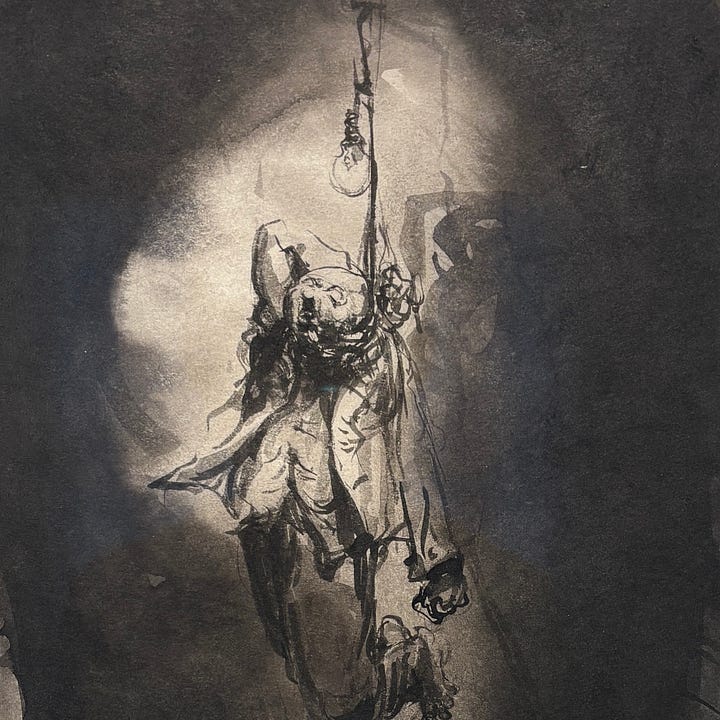
Next month, the Royal Academy will open an exhibition on the drawings of Victor Hugo: the nineteenth-century French writer who wrote The Hunchback of Notre Dame (1831) and Les Misérables (1862). Although Hugo is known for his novels, he was also a prolific draughtsman. He worked predominantly in brown ink, and his approach was intuitive and mysterious. Hugo was known to apply the ink to the paper first, allowing the shadows and lights to emerge randomly, before deciding what it was that he was drawing. Hugo started making these symbolic, unsettling drawings when he was in political exile – and isolation – on the island of Jersey in 1852-55. He continued to draw, even more prolifically, when he moved from Jersey to Guernsey in 1855 (where he remained for another 15 years, until 1870).
However, if you’re looking for a Gothic fix before that exhibition opens (March 21), or you don’t wish to fork out the full £17 for a ticket, might I suggest a less crowded and more unique alternative?
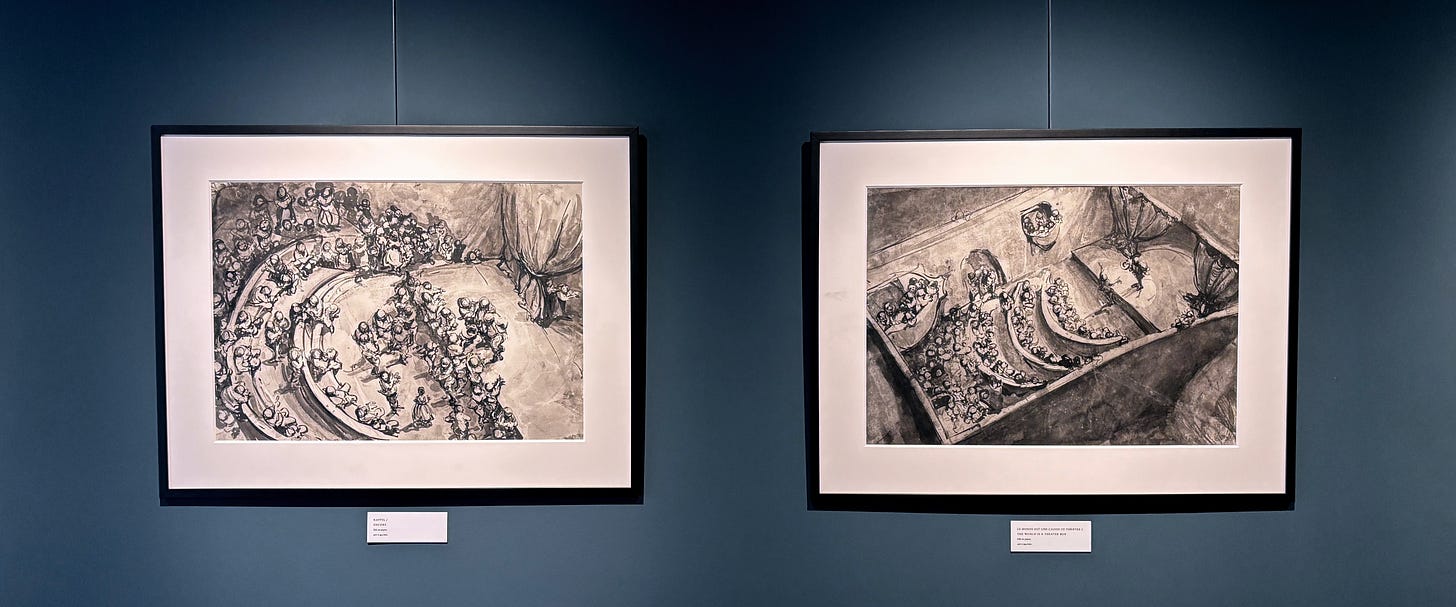
Until the end of next week (7th March), there is a rare opportunity to see the drawings of the contemporary artist Ofer Josef. This is his London debut. It’s always exciting to come across a living artist who subverts your expectations of what ‘contemporary’ art can look like (it does not, thankfully, exclusively consist of bananas taped to the wall).
Josef’s work – which has been compared to Romantic and Symbolist giants like Francisco de Goya, Alfred Kubin, and Félicien Rops – is every bit as powerful, as dreamlike as Hugo’s. Right now, Josef’s works are being exhibited at two galleries in London – Stephen Ongpin Fine Art (82 Park Street, near Marble Arch), Richard Nagy Ltd (22 Old Bond Street). The best thing about exhibiting at private galleries is that it’s free to look; you can chat to the curators (the owners); and you can even buy the works if you really, really like them.


First, a bit of biography. Ofer Josef was born in Tel Aviv in 1965, moving to France as a teenager. At age seventeen he was one of the youngest students ever to be accepted into the École des Beaux-Arts in Paris. After graduating, Josef moved to Brazil, where he lived for thirty years. He is a truly international artist, and he now lives between Spain, Brazil and Portugal. Josef has exhibited across the world in Berlin, Malmö, Marseille, Paris, Porto. Recently, some examples of his work have been acquired by the Teylers Museum in Haarlem in the Netherlands.
The work borders on the boundaries between fine art and illustration. Josef’s subjects are sometimes grotesque and comic, sometimes beautiful and tragic, and always, utterly, quintessentially, Gothic with a capital ‘G’. Josef likes to combine the human with the bestial, experimenting with anatomy, creating imaginary creatures which evoke either horror or sympathy (or both). As a teenager, Josef used to study animals: first in the Paris zoo, then in the jungle in Brazil. Now he often does so in the comfort of his own home (which he shares with forty, previously one-hundred-and-something, cats).
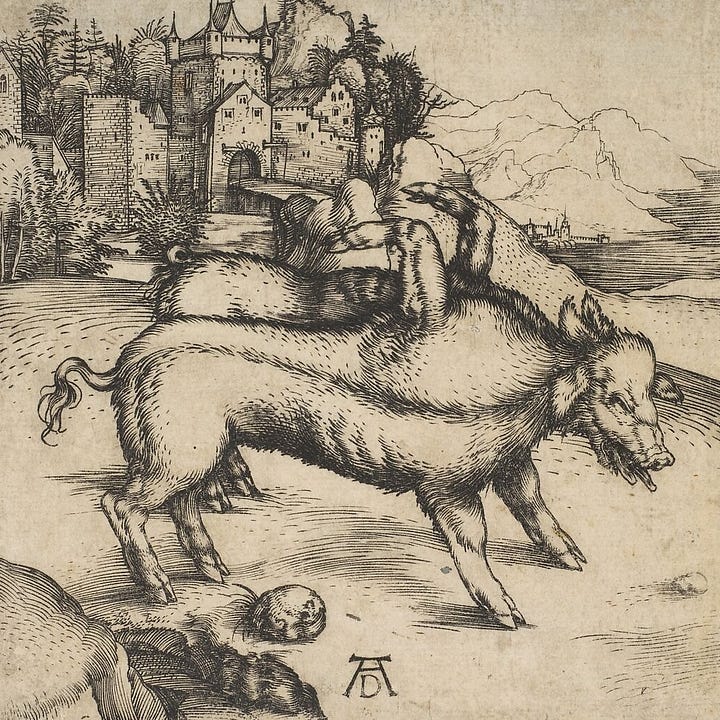
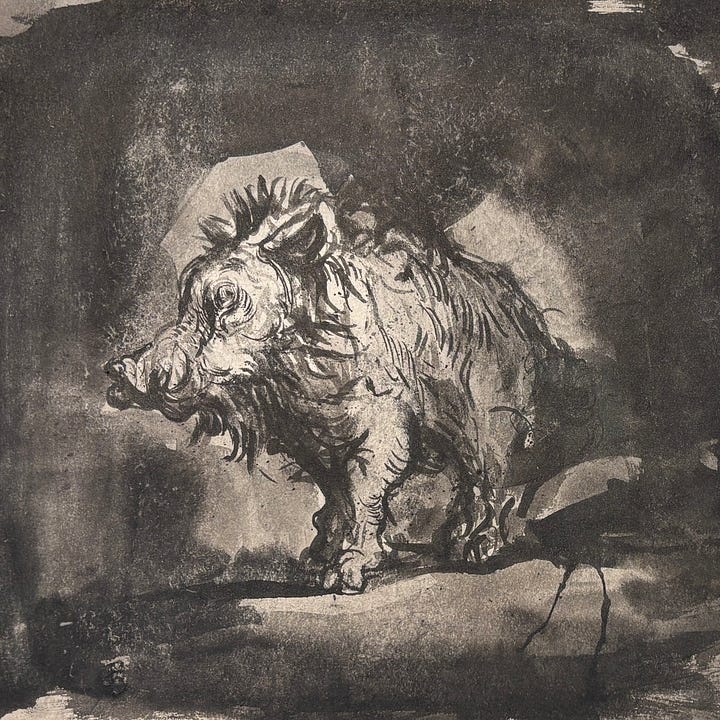
Josef’s style is consciously monochrome. This format, he believes, allows him to better express his inner vision. Unimpeded by the strictures of colour (with the exception of occasional, watered-down red), Josef uses black ink in manifold, masterful ways, quite literally manipulating darkness to make it feel like a living force.
Yet, his chosen medium of pen and ink is notoriously unforgiving. Creating up to six or seven drawings on average per day, Josef ritualistically destroys many of the works he creates. Many of the drawings are double sided, which only doubles their potential for rejection (when showing them, it also adds to the sense of mystery — one wants to know what’s on the recto).
Knowing this, one realises that every line, though seemingly spontaneous, has carefully justified its place there on the page. His final pieces are the survivors.
The works on display at Stephen Ongpin Fine Art and Richard Nagy Ltd have even more in common with Hugo and Goya than initially meets the eye. Hugo’s ink drawings and Goya’s famous Disparates series (1816-23) were both made when these artists were in exile, in the Channel Islands and France, respectively. They share a common interest in dreams, in nightmares, isolation, and the interior world. Motifs like sleep, death, and darkness come up in both sequences. This is true of Josef’s work too, and it might be because he lives part of the year as an artistic hermit, in self-imposed exile, in the Amazon rainforest.
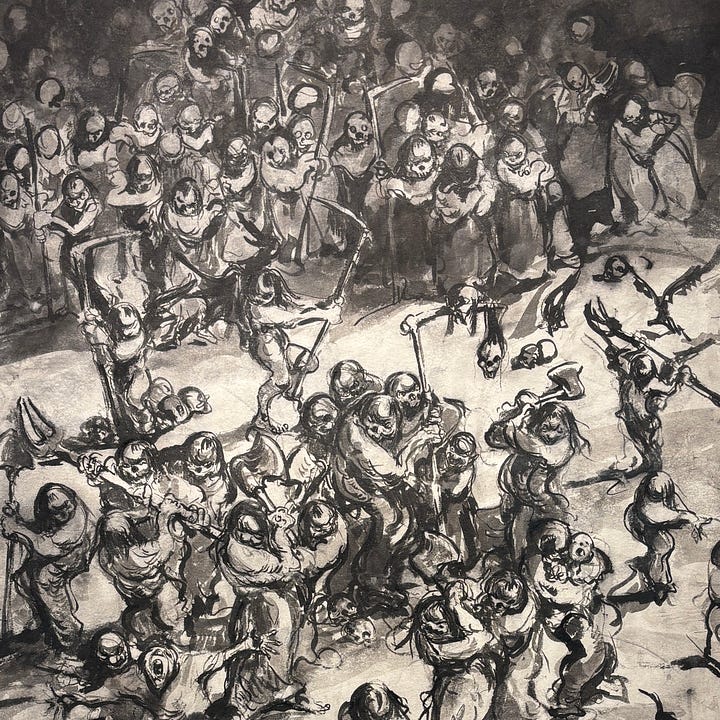
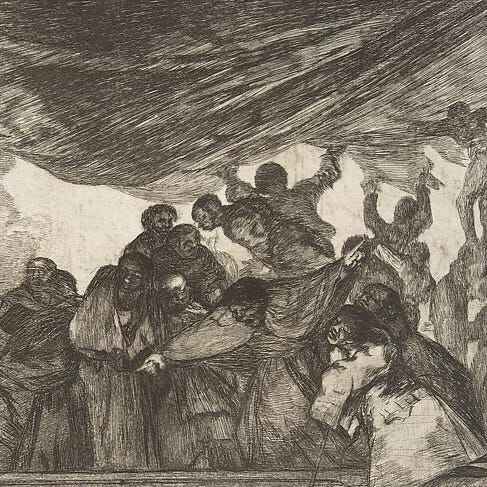
Josef’s engagement with a Romantic, Gothic past gives his drawings a timeless quality. When I first saw them, I wondered whether they might be illustrations for Dante’s Divine Comedy; or even drawings inspired by the writings of Franz Kafka (Metamorphosis, 1915) or Bruno Schulz (Street of Crocodiles, 1933).
But the answer is no: they’re all original narratives of Josef’s own making, though ones unanimously informed by a deep knowledge of early modern and nineteenth-century visual culture. As Terry Van Druten, Chief Curator of Art Collections at the Teylers Museum in the Netherlands, observes of Josef’s work:
It’s almost as if he’s looking at us from a different time period, more connected with Goltzius, Daumier, Goya, and Hugo than with the bulk of the artists today. He mocks and comments on human activity as if he himself does not have any part in it whatsoever.
I think this gets to the heart of what’s going on in Josef’s pictures. They offer a darkly subversive vision of the world – one populated by dancing skeletons, crows, guillotines, clocks, and skulls – and yet, this vision isn’t coming from ‘inside the house’, as it were, but from far outside of it (in fact, from the middle of Brazil). It’s almost like Joseph is looking in on society from a peripheral vantage point, giggling, meanwhile recording the chaos of human existence; yet, in person, this visionary artist seems to be a fairly quiet and reserved character, unlike his drawings.
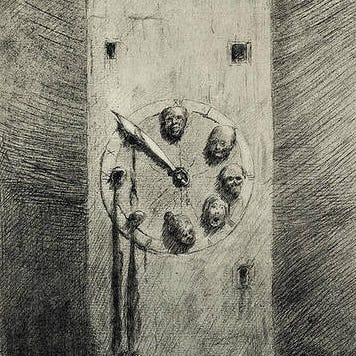
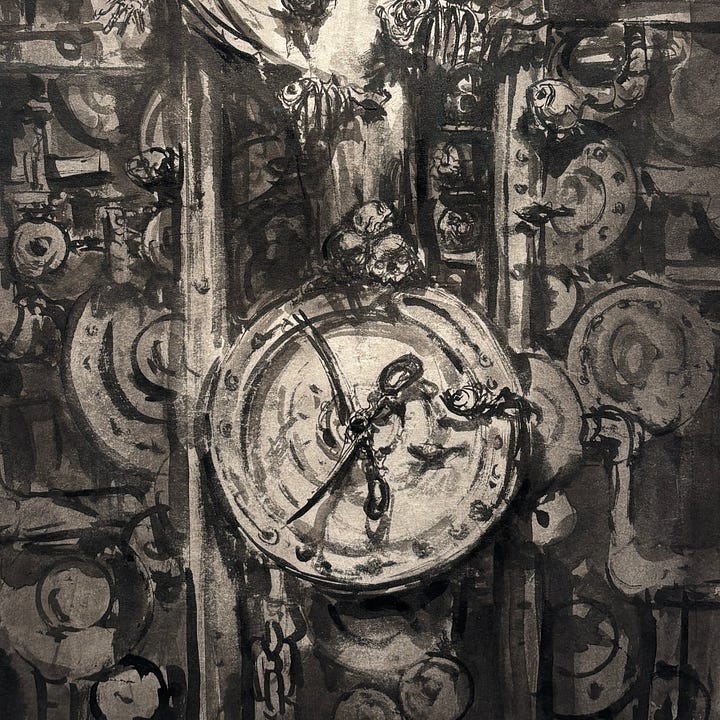
But also, the artists whom Joseph’s work calls to mind – Goya, Hugo, and Otto Dix – were responding to revolution (Goya), to political turmoil (Hugo), to war (Dix), what is Josef responding to? Is he responding to something internal, like the dark recesses of his own mind? To the artists of the past? To something wider and more intangible?
Go see his work, and let me know.
It’s nice to write about a living artist, for once.
Thanks for reading! Check out my Instagram at @culture_dumper and my Tiktok @theculturedump, where I post daily updates on my academic work, life, and current exhibitions.





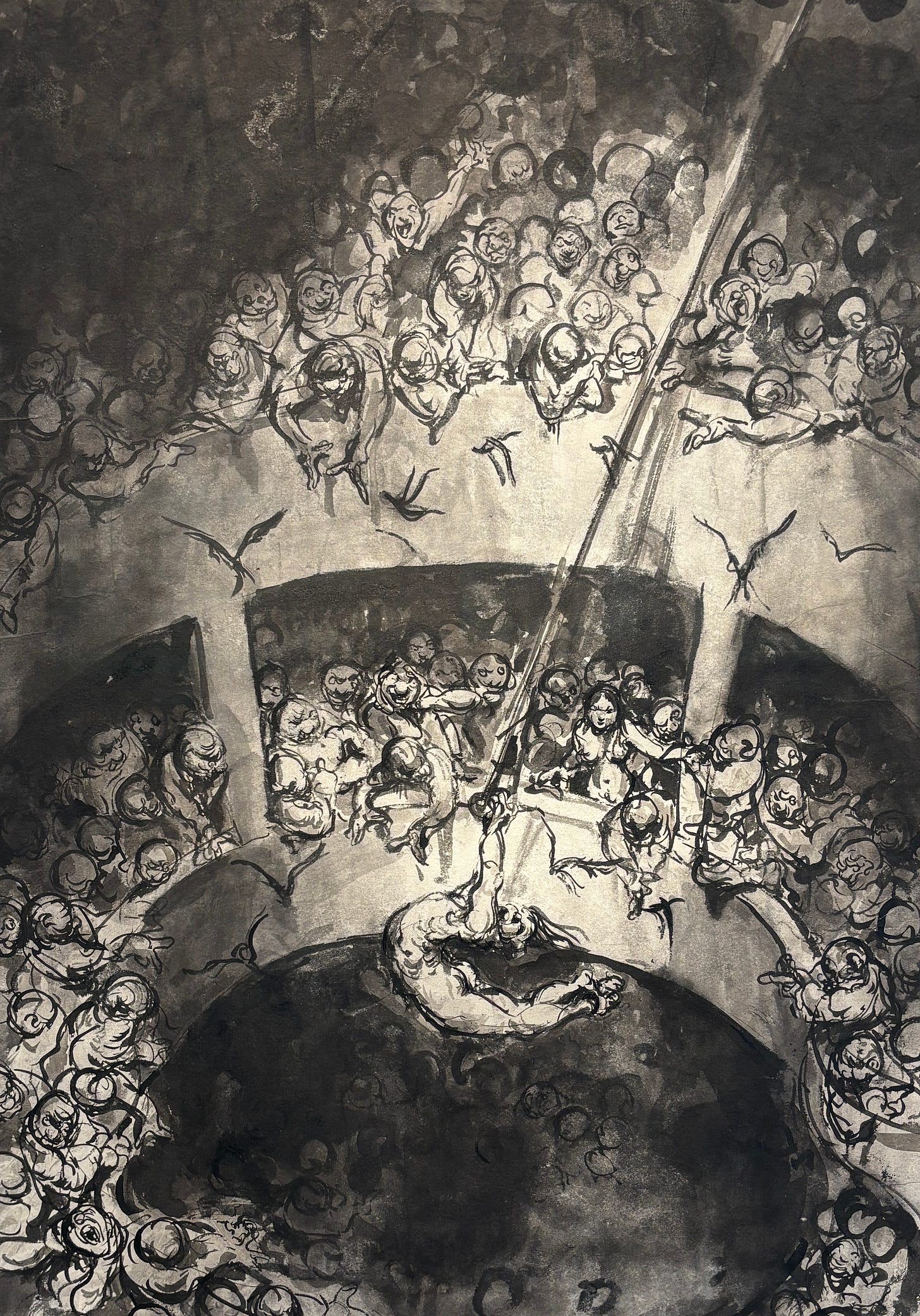
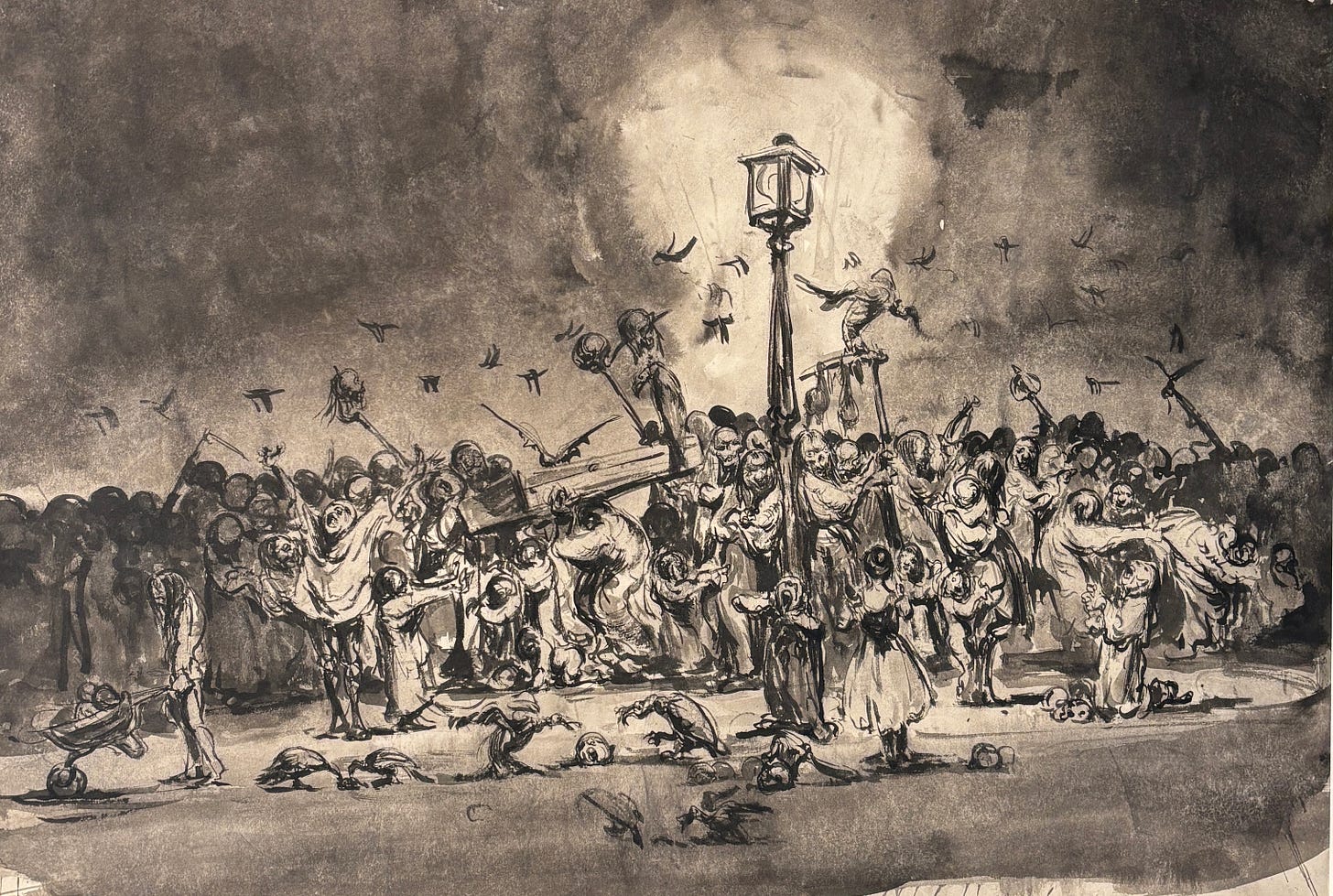

These are fantastic, some of these characters could be right at home in a Piranesi prison drawing!
wow so cool to see a contemporary artist! I love the gothic vibes of these!